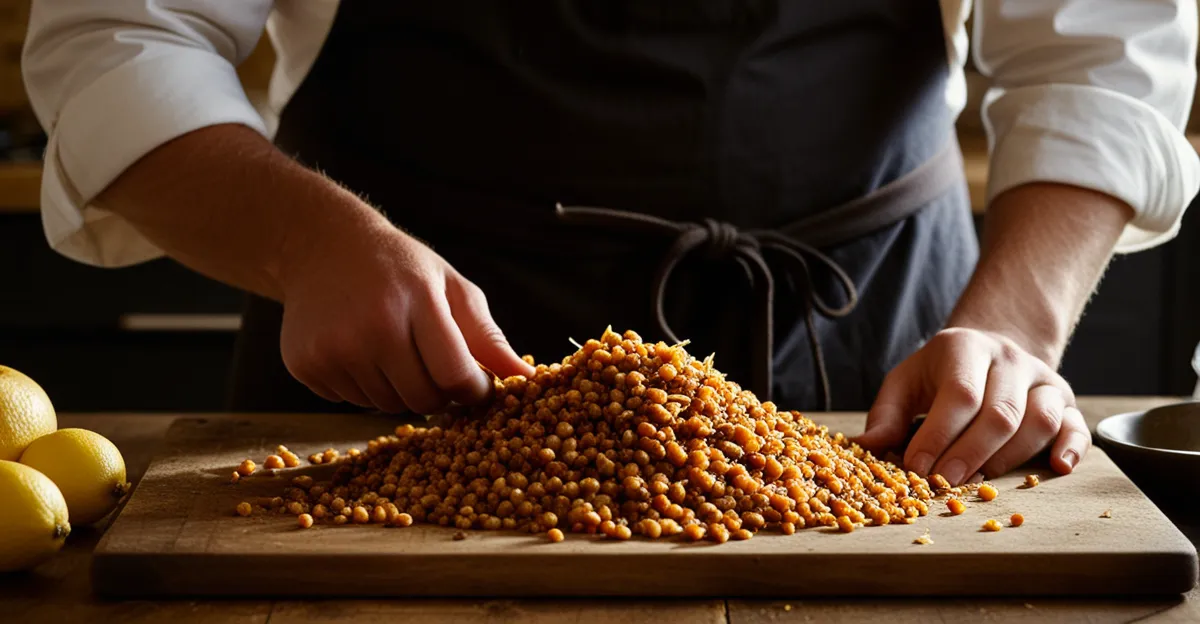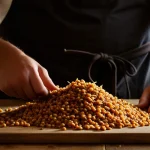Uncommon Native Proteins in UK Cooking
Delving into traditional British proteins reveals a treasure trove of unique meats and fish long integral to historical British cuisine. Among these, venison stands out as a cherished game meat, prized for its rich, earthy flavour. Venison’s roots extend back to medieval aristocracy, symbolising status but also featuring prominently in rural diets where deer were plentiful. Similarly, wood pigeon, a small game bird with a distinctive, slightly gamey taste, has been sustainably hunted in various UK regions for centuries. Its delicate flavour pairs well with robust herbs and fruit-based sauces, often appearing in festive menus.
Another rarer protein, the eel, offers a fascinating glimpse into the culinary past of coastal and river communities. Once a staple for their accessibility and abundance, eels were commonly smoked or jellied to preserve their rich, oily texture and deep umami taste. These proteins not only provided nutritional sustenance but also carried cultural significance — for example, eel pie fairs were vital community events, underscoring how food intertwined with social traditions.
Also read : What are the origins of the traditional Sunday roast?
Traditional recipes incorporating these proteins tend to highlight their natural flavours through slow cooking or pairing with complementary ingredients such as juniper berries in venison stews or red currant jelly with wood pigeon. By maintaining these lesser-known meats within regional diets, cooks preserve the diverse heritage that defines British gastronomy today.
Heritage Vegetables and Wild Greens
Heritage vegetables and foraged UK greens hold a special place within the fabric of traditional British produce. Varieties like samphire, nettles, sea kale, and salsify exemplify the diversity and seasonality that characterise British culinary heritage. Samphire, often found along coastal areas, offers a crisp, salty flavour that complements seafood dishes. Nettles, surprisingly nutritious, have been harvested in rural regions for centuries, traditionally boiled or steamed to neutralise their sting and unlock their mild, spinach-like taste.
Additional reading : How Can Traditional British Recipes Inspire Modern Home Cooking?
Sea kale, with its thick, cabbage-like leaves, grows naturally along shingle beaches and was once a common spring vegetable in coastal communities. Its subtle bitterness and crunch make it an intriguing addition to springtime dishes. Salsify, known as the “oyster plant” for its faint oyster flavour, features prominently in winter stews and soups, adding depth with its creamy texture and earthy notes. These vegetables’ use often depended on local availability and season, underscoring the intimate connection between landscape and diet in historical British cuisine.
Nutritionally, these wild and heritage greens provide important vitamins and minerals, especially at times when cultivated vegetables were scarce. They also bring unique textures and flavors that fresh, modern varieties sometimes lack. Chefs and home cooks keen on exploring British heritage vegetables often incorporate these foraged finds to deepen the authenticity and seasonal nature of their dishes, maintaining an enduring link to regional traditions that predate industrial agriculture.
Unusual Preserved and Fermented Ingredients
British food preservation boasts a rich tradition, with fermented British foods and unique UK condiments playing vital roles in historical diets. Techniques such as pickling and potting were essential before refrigeration, allowing long-term storage of seasonal produce and seafood. Among these, pickled walnuts illustrate preservation ingenuity. Made by soaking young green walnuts in brine and then vinegar, pickled walnuts develop a sharp, tangy flavour that cuts through rich meats and cheese plates. Their origins trace back to Victorian Britain, where they were prized accompaniments to cold cuts.
Gentleman’s relish, a fermented British food made from spiced anchovies, butter, and herbs, exhibits a robust umami profile. This unique UK condiment emerged in the 19th century to extend the shelf life of anchovies while adding piquant seasoning for bread and crackers. Its salty, smoky richness complements simple fare and offers insight into British taste preferences for strong, savory flavours.
Another preserved delicacy is potted shrimps, which involve cooking shrimps in spiced clarified butter. This technique both preserves the seafood and concentrates its flavour. Potted shrimps have a creamy texture and fragrant spices, typically consumed on toast or with crusty bread, especially in Northern England. Historically, such fermentation and preserving methods not only ensured protein availability through harsh winters but also created distinctive taste profiles that became central to regional culinary identities.
These unique condiments often pair with traditional British proteins and heritage vegetables, enhancing dishes with layers of acidity, sweetness, or spice. By reviving these preservation methods, modern cooks reconnect with the pragmatic and flavourful aspects of British food heritage.
Distinctive Spices and Flavourings Unique to the UK
Exploring British spices reveals a selection of rare and region-specific flavourings that have subtly shaped traditional British cuisine. Among these, lovage stands as a noteworthy herb. With its celery-like aroma and mild parsley undertones, lovage was historically used to enhance soups, stews, and broths in rural cooking, adding depth without overpowering other ingredients. Its cultivation in kitchen gardens from medieval times highlights its place in traditional British proteins dishes, where it often complements game meats like venison or wood pigeon by intensifying their earthy profiles.
Similarly, mace, the dried outer covering of the nutmeg seed, features prominently in many historic recipes. British cooks valued mace for its warm, aromatic spice notes that balance rich meats and baked goods alike. Its subtle sweetness and slight peppery edge made it indispensable in festive stews and sauces, marrying well with the flavours of unique British meats. The restrained use of mace reflects British cooking’s preference for layered complexity rather than bold spices.
Horseradish, a pungent root with a sharp, spicy heat, has also long been a staple flavouring in UK regional cuisines. Traditionally served grated fresh alongside beef or incorporated into sauces, horseradish provided a piquant counterpoint to heavier proteins. Its cultivation in cooler climates suited various parts of the UK, ensuring its accessibility for working-class households and aristocratic tables alike.
These distinctive unique UK herbs and spices underscore how local landscapes and climate influenced the evolution of British flavour profiles. Their continued, though often subtle, presence in cooking pays homage to the rich heritage of flavouring that supports and enhances classic dishes without overwhelming the core tastes of native proteins or foraged produce. Taken together, lovage, mace, and horseradish exemplify the nuanced palette of flavourings in British cuisine that remain emblematic of the nation’s culinary identity.
Historical Sweeteners and Baking Ingredients
Traditional British sweeteners and unique baking ingredients UK have shaped the rich heritage of UK heritage desserts, providing distinct tastes and textures that mark historical British cuisine. Among these, black treacle is a dark, viscous syrup derived from sugar refining, prized for its deep, bittersweet flavour and moisture-retaining qualities. It often features prominently in classic puddings such as treacle tart and sticky toffee pudding, contributing rich caramel notes and a luxurious texture.
Suet, rendered beef or mutton fat, is another cornerstone of British baking. Historically valued for its ability to create light, crumbly pastries and puddings, suet adds richness and moisture that other fats cannot easily replicate. Its inclusion in dumplings, steamed puddings, and mince pies not only enhances mouthfeel but also connects these dishes to longstanding culinary traditions dating back to medieval times.
Caraway seeds, tiny yet potent, lend a subtle anise-like aroma and mild earthiness to breads and baked goods. Integral to some UK heritage breads and festive sweets, caraway seeds reflect regional preferences that favour nuanced spice layering over bold, singular flavours.
These baking ingredients underscore a broader historical context where resourcefulness and local availability informed British cooking. Black treacle, suet, and caraway seeds continue to evoke the sensory heritage of British desserts, linking present-day culinary practices with unique traditional produce from the past. Their use celebrates the enduring appeal and complexity of British flavourings in baking, enriching both festive occasions and everyday meals.






